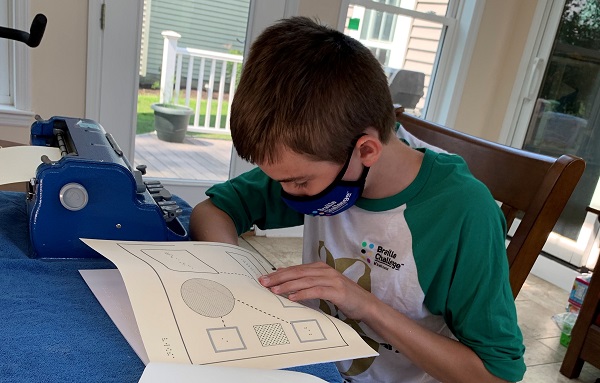We know that families of blind and low vision children are still facing major challenges as the ongoing COVID-19 pandemic has forced many schools to move to online education.
As a person with low vision who received my elementary education before the first version of the Individuals with Disabilities Education Act (IDEA) was passed in 1975, I think of the changes my own mother created for me to receive an equitable education to my sighted peers. My mother let the school administration and teachers know what her visually impaired child needed to succeed, and amazingly, they listened.
Now we need your input to know what is and is not currently working in our educational system for our children who are visually impaired, including those with additional disabilities and deafblindness.
I’ve had the pleasure of partnering with nine other individuals who are deeply invested in the education of students with visual impairments. We developed a survey that focuses on understanding the impact of COVID-19 during this challenging 2020-2021 school year. We invite you to take the survey if you are a family member, guardian, teacher of students with visual impairments, or O&M specialist for a child receiving early intervention, preschool, K-12, or transition services (birth-21 years).
The survey closes November 30, so you have time! Can you identify with one of these family members whose quotes are below? Just like they have shared, we want to know your experiences so we can identify challenges and successes and all work together to ensure our children have accessible, engaging, and inclusive access to education.
"My child’s TVI checks in with him every other day to see how things are going and if he needs anything But, my child’s O&M instructor has not been able to meet with my child because of social distancing and it’s hard to learn new techniques without it being hands-on instruction.”
-Family member/guardian of a 16-18-year-old child who is blind“[My child has received] no services at all from TVI or O&M—students of color are not a priority when it comes to providing services.... Native Americans, Asians, Hispanics, Islanders, Tribes from Africa, Black, etc. are not even considered for TVI/O&M services. It is inhumane, unethical, and ungodly.”
-Family member/guardian of a 16-18-year-old child with low vision who has additional disabilities
Learn more about the Access and Engagement study and take the survey by November 30 by visiting www.AccessEngagement.com.
Thank you so much for your help—together, we can make sure that blind and low vision students' education is accessible, engaging, and equitable. But we need everyone's voices in the conversation.
